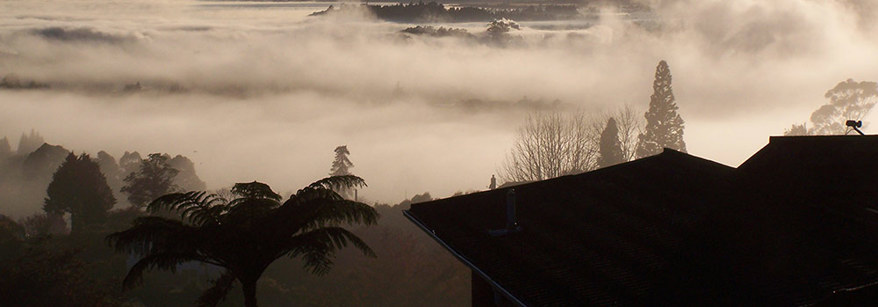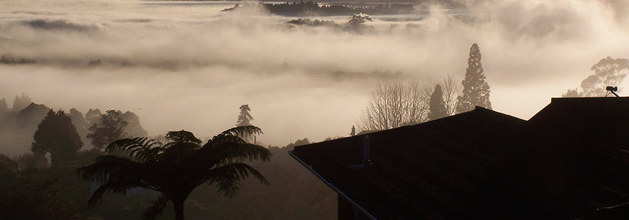The National Environmental Standards for Air Quality (NESAQ) were introduced in New Zealand in 2004. These standards provide a level of protection for the health of New Zealanders and our natural environment. It is our responsibility to ensure that the Bay of Plenty meets these standards.
New Zealand’s air space is divided into 74 ‘airsheds’, or legally designated air quality management areas. In Bay of Plenty we have one region-wide airshed and within that space two separate airsheds for Rotorua and Mount Maunganui. You can see the extent of the two separate airsheds below.
Both the Rotorua and Mount Maunganui airsheds have a poor air quality record and are classified as polluted under the NESAQ. Both airsheds have issues with airborne particulate matter, specifically particulate matter smaller than 10 millionths of a metre (PM10). By creating an airshed around these two areas it means Regional Council can better manage the issue and introduce specific rules if required.
Rotorua Airshed
The Rotorua Airshed was first gazetted in 2005 to enable monitoring and introduce rules to help improve air quality.
The boundary was previously re-gazetted in 2018 to cover some areas of proposed new residential development; however at that time housing prices and demand in Rotorua were still relatively stagnant, and significant growth in the immediate future was not expected. Rotorua is now experiencing a significant demand for housing, and further residential development is beginning to occur in areas adjacent to the Airshed. Any burners installed in houses in these areas will contribute to the PM10 (smoke) concentration in the Airshed, and have the potential to compromise all the hard work the Rotorua community has already done to improve air quality.
The National Environmental Standards for Air Quality are also in the process of being amended by Central Government and extending the Airshed is good first step in preparation for the more stringent regulations that are proposed, and the air quality targets that we will need to meet in future.
Therefore, in July 2021, Regional Council applied to the Ministry for the Environment to extend the boundaries of the Rotorua Airshed. The purpose of this re-gazettal was to avoid new developments adjacent to the current Airshed contributing particulate matter from smoke into the Airshed and undoing the great work our community has done to improve air quality over the last 15 years.
Read about the infrared camera technology being used to help detect illegal wood burners in Rotorua.
The Ministry for the Environment has now granted our application to re-gazette the Rotorua Airshed and extend the boundary. The new boundary will come into force on 3rd June 2022. View the media release.
Read more about what is being done to address this issue: Rotorua Air Quality Project.
Mount Maunganui Airshed
The Port of Tauranga and the Mount Maunganui industrial area also have an issue with PM10, however, unlike Rotorua, it is primarily caused by industrial discharges. The Mount Maunganui airshed was introduced to enable tighter rules and resource consent decisions and a greater ability to manage industrial discharges.
It means new consent applications for activities that discharge PM10 cannot be granted consent if they are likely to increase offsite PM10 concentrations. This is unless the discharge can be offset by at least an equivalent PM10 reduction in another part of the airshed.
- Read more about Mount Maunganui industrial air quality.


